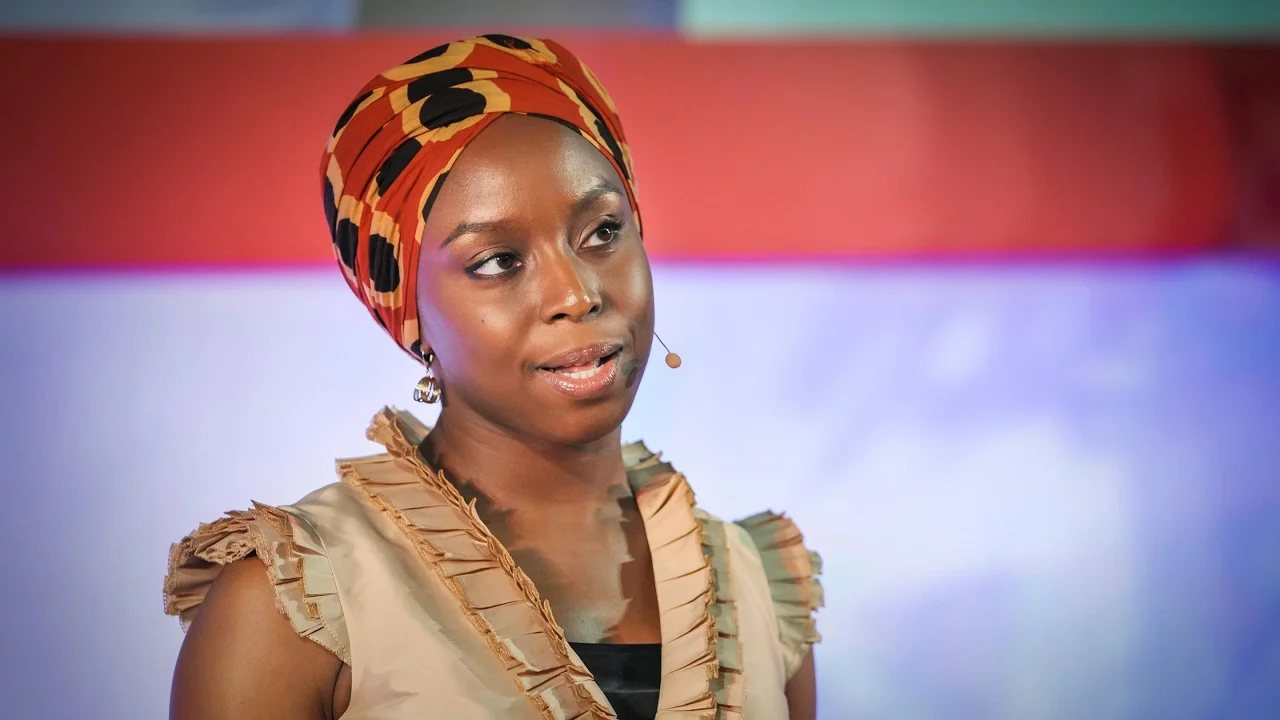To understand the importance of self-representation within photography, Merel Maan Galama sheds a light on the history of photography, showing how prejudiced representation of Roma became part of archives, how this influenced the widespread development of stereotypes and how these are now continuously spread through algorithms.

Roma are the largest group spread throughout Europe who share an ethnicity without territory. Although large in numbers, Roma are often ignored, made invisible and discriminated against. I consciously do not use the word minority in this context, because it is a binary way of placing people opposed to each other. The terms minority and majority do not allow for much grey areas in between, and is, in my opinion, the language of ‘us vs them’. More astonishing is that Roma are a group with different dialects, nationalities and social surroundings yet still portrayed in a singular manner. As Chimamanda Ngozi Adichie strongly argued in her Ted talk of 2009, if only a single story is told, generalisations and assumptions are made about a group of people. Part of this single-sided story is the widespread imagery of “the typical Roma” throughout Europe since the 19th century. How is the visual imagery part of the single-sided story?
Creating 1 image
In the volume Inszenierung des Fremden, it becomes clear that before photography was invented in 1839, a one-sided story of Roma was already widespread in literature and art. When Ludwig Angerer took the first known photograph of Roma through military photography, the focus was on social and ethnic groups rather than individuals, reinforcing existing perceptions. Every new photograph followed traditional patterns of perception. Photographer Károly Szathmáry Pap also amplified traits he saw as typical of certain groups in a studio setting. The popularity of the carte de visite in the 1860s spread prejudiced imagery, including of Roma. Photography also aided painting, with widespread photos integrated into artworks as truths. European societies used visual representation to construct ‘otherness’, depicting groups from nearby and distant colonies in a certain way – similar to how Europeans, seeing themselves as “civilised”, viewed Roma through a colonialist lens. Scientific ethnographies focused on documenting craft and production techniques rather than the people. In the Habsburg Empire, police photography began with prison inmates, then expanded in the mid-1880s to systematically document criminals and suspects. By 1902, Dactyloscopy departments were set up in major police authorities, conducting nationwide fingerprint recognition alongside photographic identification checks. This rapid development of identification systems was briefly halted by World War I but resumed with full force after 1918. In Germany, in 1938, the ‘Racial hygiene and population biology’ research under the supervision of Dr Robert Ritter was set up to create an acquisition of the criteria of a “race” to subsequently racialize people and promote harmful stereotypes that contributed to the persecution of these groups during the Holocaust. One key document from Ritter’s research contained photographs, statistics and detailed “racial” studies of the Roma people. This book categorized and justified the treatment of Roma in Nazi Germany. Its photographs were especially disturbing, objectifying and dehumanizing Roma individuals to reinforce negative stereotypes. Ritter’s work led to policies of forced sterilization, deportation and extermination of thousands of Roma. To this day, these images remain in the public sphere.
Maintaining 1 story
These developments – military photography, carte de visite, police photography and ‘Racial hygiene and population biology’ research – are important to keep in mind when looking at the concepts in Jacques Derrida’s Archive Fever. According to Derrida, archives are always political and ideological. They are constructed, controlled and interpreted by contemporary ideologies, which then again shape knowledge, power and memory. Most importantly, archives are influenced by who controls access to them, and who selects what is taken into account. Archives are therefore never neutral, and power structures are embedded in the act of archiving. Since images can be reproduced and shared, they became part of archives. Photographs being unique and serving as a record of “reality” are therefore closely linked to archives. Photos became a way of capturing facts and moments in time, making them valuable for history, and thus the archive of memory. Over time, photography has been used for many purposes, like propaganda, advertising, art and entertainment, thus representing an important tool in modern history and culture. As we have seen in the history of the photographic documentation of Roma, many power structures had great influence on the documentation and representation of Roma people. These representations became part of the archive and taken as fact, thus creating a singular idea. The visualisation of Roma became a single-sided archive, a single story. Until this day, media coverage has often emphasized poverty, illegal camps and a lack of integration, while rarely exploring the reasons behind such living conditions, such as discrimination, lack of access to housing and systemic exclusion. Instead, Roma people are frequently shown as living outside the boundaries of accepted social norms, which in turn can lead to the public perception that all Roma are inherently uncivilized or criminal. It is therefore of utmost importance to keep questioning the single-sided stories that we consume, to challenge our own binary thinking. To research where stories are coming from and to democratize our own knowledge. As Brooks proclaims in her powerful article, it is important to reclaim history to build the future in new ways outside the existing dominant singular archive. This means that we as a society need to make space for multiple voices, so that multiple stories can be told.
Almost invisible
Historically, queer Roma have been entirely absent from photographic representation, their experiences often erased or ignored in mainstream media. The absence of their voices within the dominant archive reflects a broader trend of marginalization. The article of Daróczi shows how intellectuals with Roma background, by gate crashing elite and dominant culture, empowered artists with a Roma background to follow an artistic career. Within photography, we have to make space for photographers with a Roma background who work in real life with Roma people, including those within the LGBTQIA+ spectrum. One such photographer is Béla Váradi. The 2023 photographic project of Váradi – ‘Sorry, but I’m Not Sorry’ – showcases the vibrant lives of LGBTQIA+ individuals within Gypsy, Roma and Traveller (GRT) communities. The project challenges stereotypes and promotes a more inclusive society. For example, the photo titled Percy and Roo shows how they ‘experience taking their dual identities in public for the first time in their lives; Queer and Gypsy at the same time, without fear or reservation’. The photo series is an intersectional celebration, which emphasizes the multiple identities and stories individuals hold. Váradi let individuals set the pace of engagement, ensuring consent and an ethical focus on empowerment. The series was first exhibited at Kai Dikhas, a non-profit foundation promoting Sinti and Roma art and culture. Béla Váradi’s photo series is now on view at the Kunstbrücke am Wildenbruch in Berlin. The Kunstbrücke am Wildenbruch is an ex-public toilet where cruising messages from the 90s are still visible between and above the old tiles, showing the history of LGBTQIA+ individuals to claim and inhabit spaces to deal with and outside society's discrimination. An almost invisible archive of LGBTQIA+ individuals.
Binary is stereotyping
With the digitalisation of photography, the archive also moved to the online sphere. Digitalizing the photographic archive of Roma has already reinforced stereotypes, and thus single-sided stories, and the algorithms continue to contribute and retell these single-sided stories, which creates a power imbalance of representation. To search through these archives language is used to describe what is on the image by using keywords. Photography, and the archive of it, is therefore undergoing a linguistic transformation. These keywords are based on the already existing ideas within our society. Who decides which keywords are used lies in the hands of who made the algorithms, and which prompts are integrated. Algorithms are designed to promote certain keywords and images based on the goals / preconceptions of their creators. This makes the results seem random or even neutral to users, but they will guide viewers in a specific direction. Also, AI is designed by humans and reflects existing biases; in order to quickly recognise and understand images, existing stereotypes are integrated, meaning that algorithms are therefore relying on such stereotypes. Furthermore, according to Rui Zeng: ‘The aesthetic styles and content styles of AI-generated images woven from stereotypes, on the one hand, cater to existing widespread cognition, and on the other hand, reinforce viewers’ recognition of their own stereotypes in the images, thus further strengthening the original stereotypes.’
I am not arguing that digitalization – and with it, the algorithmization of imagery – is inherently stereotyping. However, the historical power imbalance embedded in the archive has carried over into today’s algorithms. Binary code translates into real-life observations, and within these images, a singular, binary tendency is already present. With stereotypes still deeply rooted in society, algorithms amplify this single story, translating it back to their users. The archive’s power imbalance is not erased through digitalization; instead, it continues to reinforce unequal structures. We have seen this stereotyping in historic photography. The images perpetuate stereotypes, and in turn, Roma communities face real-world discrimination based on these constructed narratives. However, artists like Béla Váradi and intellectuals such as Daróczi remind us of the importance of reclaiming these narratives and providing space for multiple voices. Moving forward, it is essential for us as a society to not only create spaces for Roma photographers but also to continue questioning the dominant and often single-sided narratives around marginalized communities. We therefore have to go outside and in between the binary, to create multiple stories.
The views and opinions in this article do not necessarily reflect those of the Heinrich-Böll-Stiftung European Union.



